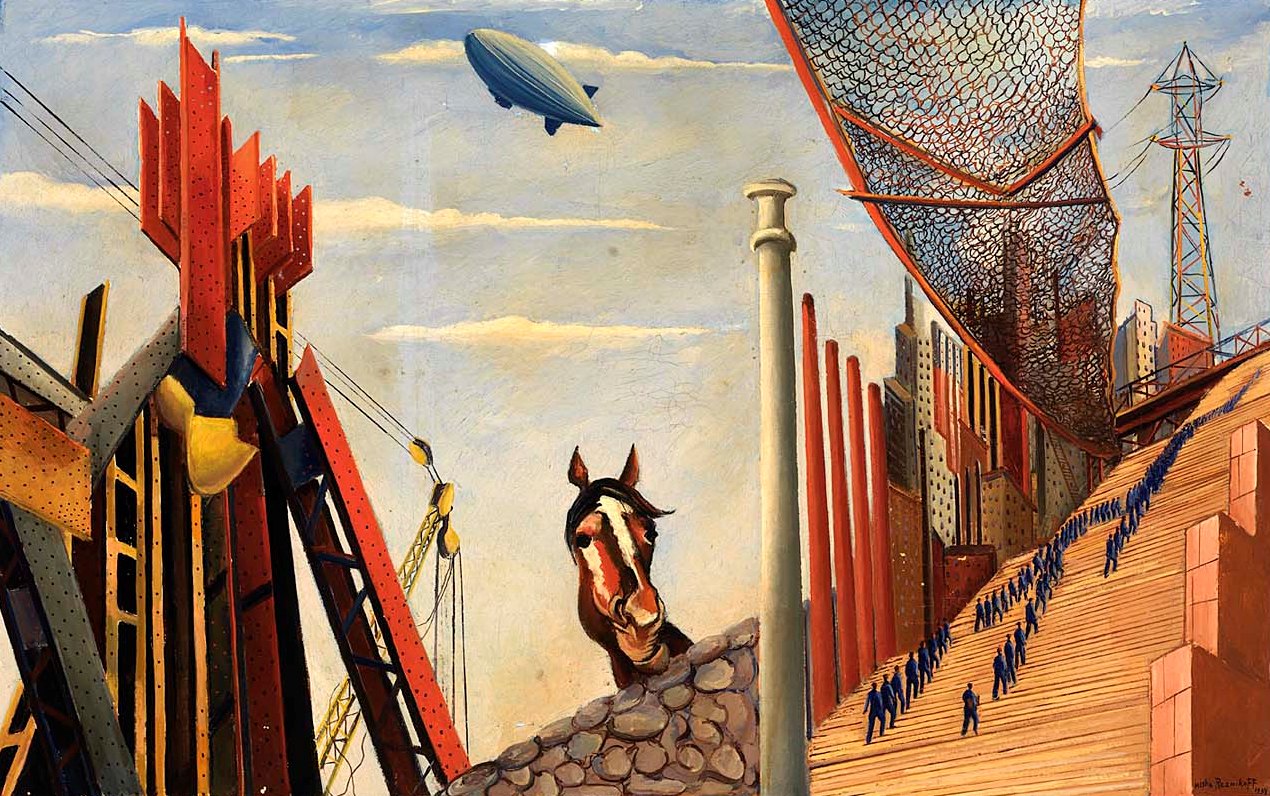Image Source – Smithsonian American Art Museum
In 1933, the American economy was in utter turmoil. The Great Depression was raging after the stock market crash of 1929, and close to 25% of Americans were unemployed. When President Franklin D. Roosevelt took office, he immediately set to work. Roosevelt’s administration created “The New Deal” which developed programs to stabilize the nation, provide jobs, and supply relief for those who were suffering.
Created on May 6th, 1935, the Works Progress Administration (WPA) was one such program that provided reprieve for American citizens. This program particularly piqued my interest because it included artists. Artists aren’t usually the first to benefit from unemployment plans. Thankfully, politicians like Harry Hopkins believed that everyone should be included in The New Deal programs. In Hopkins’ words, “Hell, they’ve got to eat just like other people!”
Reviving the Economy through Public Works of Art
Not long after the WPA began, the Public Works of Art Project (PWAP) was up and running. As a division of the WPA, the PWAP produced pieces of art for government buildings across the country. These pieces were created by 3,749 artists, who not only had to wait in long lines outside government buildings but had to prove they were, indeed, professional artists. They were to be held to the same standards of public value and production as those performing physical labor. In order to be hired, each artist had to pass a test, giving them a ranking of “Level One Artist, Level Two Artist, or Laborer.”
After only 4 months, the artists had created 15,663 paintings, murals, prints, crafts and sculptures, netting a pretty nice income- a total of $1,184,000, or $75.59 per piece. Eventually, the PWAP dissolved and was replaced by the Federal Art Project (FAP).
Keeping the Luminaries Going
The FAP was a little more selective about who was hired to produce art. In fact, you may recognize a couple of the artists that created pieces for the FAP, namely Jackson Pollock and Mark Rothko. This particular program had a significantly bigger reach than the PWAP, employing over 5,000 artists and producing more than 225,000 pieces of art for the American people.
A Legacy that Inspires
Because of mismanagement and the ramping up of wartime employment, the Work Projects Administration was dissolved in 1943. While some of the art from that time is still around today, many pieces have been lost or stolen. The remaining few are now under the regulation of the General Services Administration (GSA). Most remain in the hands of private collectors, but some can be seen in government buildings or galleries across the country. If you’d like to visit a collection of WPA art, the Treasury Department has a wonderful compilation.
Even though the WPA had its critics, it also had its supporters. There is no denying the fact that it provided our nation with beautiful artwork, but also economic relief for the American people.
Add to Your Collection
If you are looking for the perfect piece to begin, or add to, your own art collection, visit our GALLERY. We have beautiful, original mid-century modern pieces by Raymond Loewy, Vincent Raney, and others.





